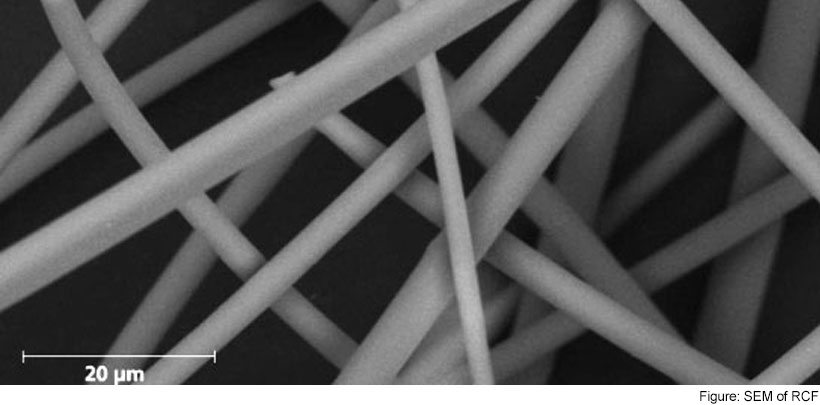While RCF is often compared with asbestos, it is chemically and physically different from asbestos and is not a “substitute” for asbestos:
- Asbestos occurs naturally while RCF is man-made.
- Asbestos is crystalline while RCF is amorphous, without a clearly defined shape or form.
- Asbestos splits longitudinally into fibrils of smaller diameters while RCF splits transversely into shorter fragments.
- Asbestos generally is more durable than RCF.
- Asbestos is only capable to a maximum use temperature of 1550°F (850°C) while some HTIW products can be used up to 3000°F (1650°C).
The basis for production of RCF is molten mineral raw materials, made into wool by centrifugal, blowing or spraying methods. The diameter of the individual fibers is determined by the production process and is not changed by machining or further processing.
Asbestos is the generic term for a series of fibrous-crystallized natural silicates. Based on its crystalline structure and chemical composition, asbestos is divided into two main groups; serpentine (primarily chrysotile or white asbestos) and amphibole asbestos (primarily crocidolite or blue asbestos, amosite or tremolite).
In contrast with RCF, the crystalline shape of asbestos fibers allows fibers to split longitudinally into thinner fibrils.
Fiber diameter is a very important factor that plays a significant role in exposure and dose. The thinner the fiber, the more chance it has to reach the deep lung. This combined with a high biopersistence of amphibole asbestos results in a very high dose reaching the deep lung and remaining there for an extremely long period of time.
Furthermore, the thinner the fiber, the longer it can remain airborne, increasing the overall dust and potential exposure levels.
RCF airborne fibers are much thicker and are therefore less respirable. As a further consequence, handling of RCF products generates far less airborne dust as shown in the epidemiological studies where cumulative exposures have been measured.
The concept of dose to the target organ also takes into consideration the biopersistence of fiber dust. Biopersistence of RCF is about 10 to 15 times shorter than that of amphibole asbestos. RCF is therefore far from reaching the dose to which asbestos workers were exposed. Experts agree that dose matters most when one evaluates risk. Based on the differences between RCF and amphibole asbestos described above the estimated relative risk potential is about 800 times lower for RCF. While significant levels of disease have been observed in workers exposed to asbestos 10 to 40 years after exposure, no parenchymal fibrosis or lung cancer has been found in workers exposed to RCF even after more than 50 years of production.
Walker et al., (2012) used data provided by University of Cincinnati epidemiology study investigators to learn whether lung cancer and mesothelioma had occurred in RCF workers at rates that would have been expected if RCF had a carcinogenic potential similar to those of various types of asbestos. They found that there was no elevation of lung cancer or mesothelioma in RCF workers by comparison to population expectations. Lung cancer had occurred significantly less frequently than would have been the case if RCF were like crocidolite. The data do not yet permit a similar conclusion with respect to chrysotile asbestos.
Walker AM, Maxim LD and Utell M (2012). Are airborne refractory ceramic fibers similar to asbestos in their carcinogenicity?. Inhal Toxicol 24(5-8): 416-424.


